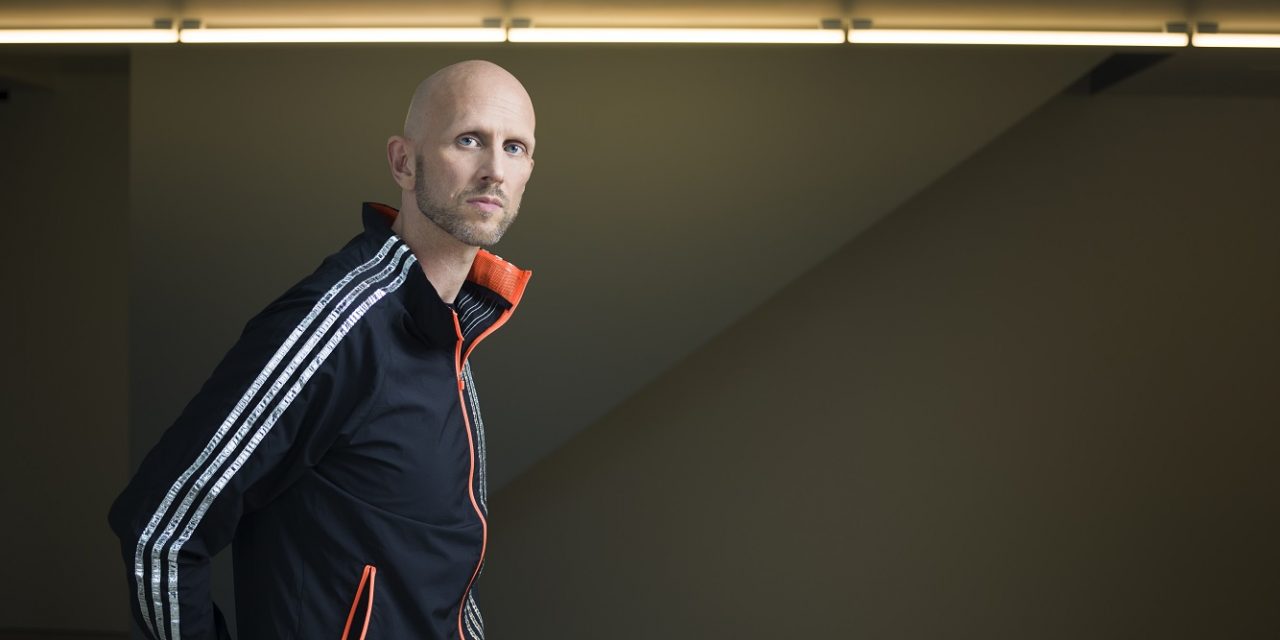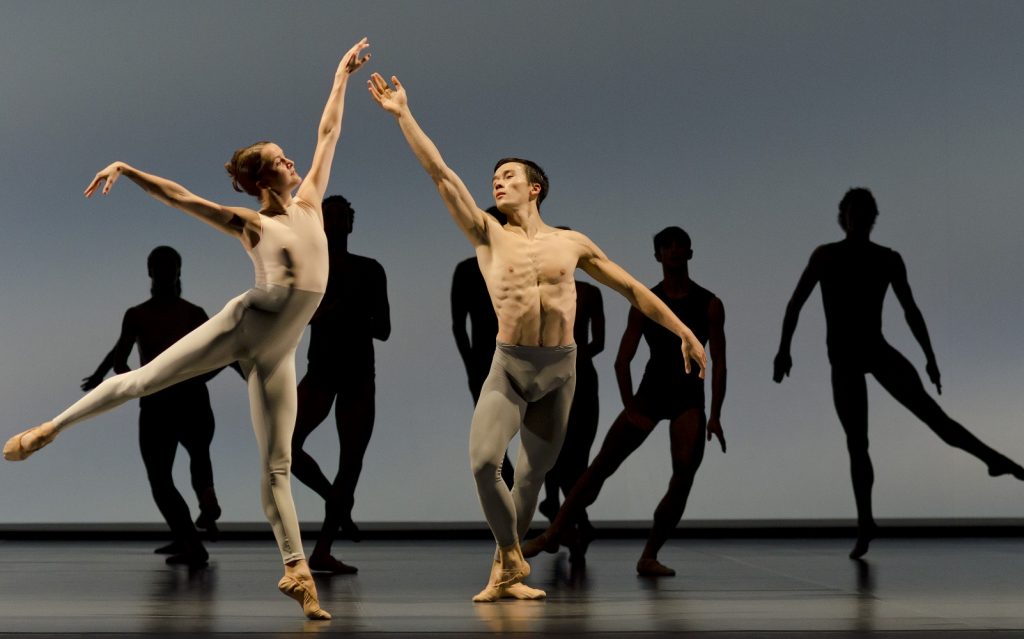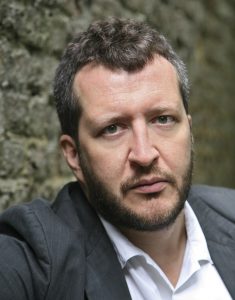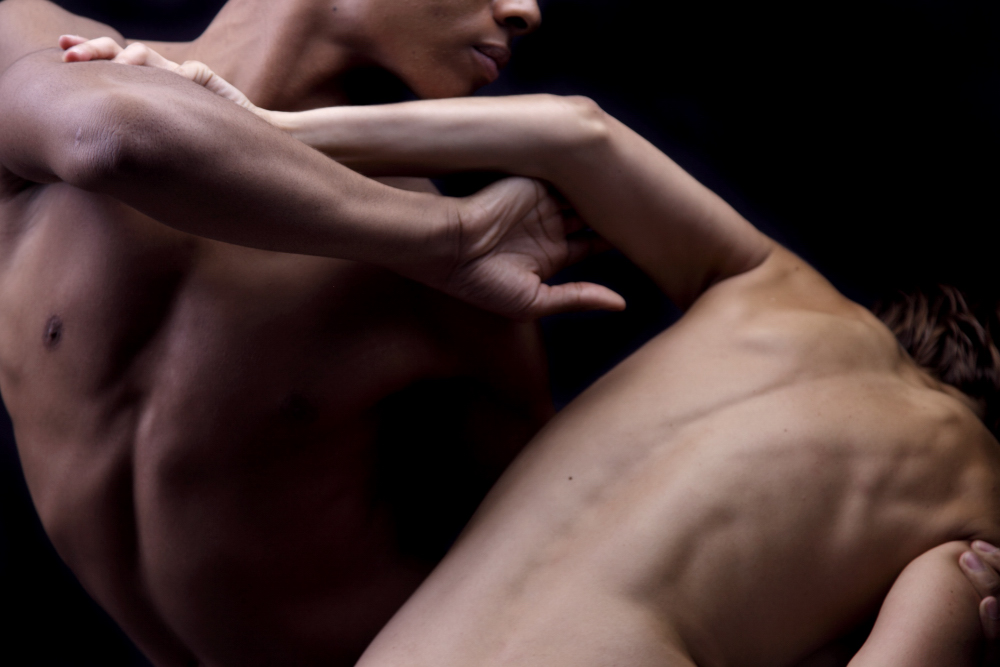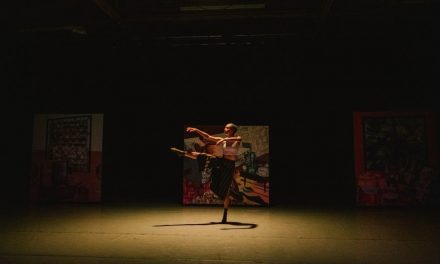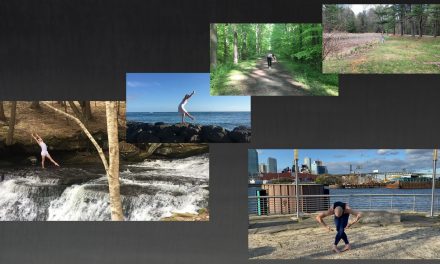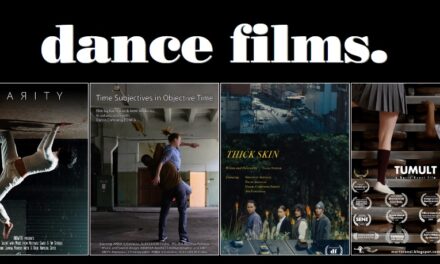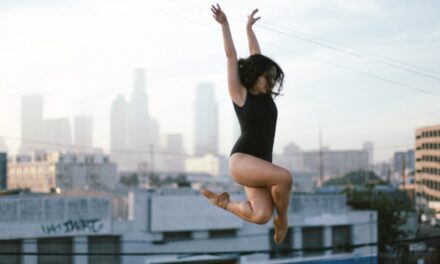The Hammer Museum in conjunction with Glorya Kaufman Presents: Dance at the Music Center, treated the L.A. audience to a panel discussion on Tuesday, July 2, 2019, with Royal Ballet’s multi award winning Choreographer/Director Wayne McGregor; and, Visual Artist, Hugo Boss Award Winner, Tacita Dean. The panel was moderated by Ariel Osterweis, Professor of Critical Dance and Performance Studies at Sharon Disney Lund School of Dance at Cal Arts. This informative panel provided insight into the upcoming Adés & McGregor: A Dance Collaboration, and world premiere inspired by Dante’s Divine Comedy, set to Thomas Adés’ Inferno, which will debut at the Dorothy Chandler Pavilion on Friday, July 12, 2019.
Seated center stage, was tall lanky near alien-like, Wayne McGregor, with his quick easy wit and style. On his right was Tacita Dean quiet, self-effacing, with Osterweis, the moderator to his left. To begin the panel, McGregor was asked what he’s in process of doing, He answered that he was working on 12 projects around the world, Rambert Ballet, La Scala, Alessandra Ferri in Wolf Works, Covent Garden in May 2020 (etc.). He and Thomas Adés, his collaborator, have also combined their efforts using Googles AI Tools. All his projects were at different stages of completion.
Osterweis asked how he and Tacita started working together since he is hyper kinetic and Tacita is contemplative.
Wayne: Tacita originally turned one of my projects down.
Tacita: I’m a Visual Artist, I just never wanted to create Ballet before. However, the Divine Comedy started with design, then the music was inspired and added by Thomas Adés’ Inferno later in the process.
However, the new added job of doing costumes was terrifying since I had never done costumes before. My medium is Drawing and Photography.
McGregor jumped in, reminding her that Thomas Adés never wrote music for dance either.
Osterweis: How did your work change when it was in a dance piece?
Tacita: It’s Incredible! Imagery, preparation, soothsayers, masks, false faces and movement. It’s three dimensional images vs static dimension. I started with cut out forms, and painted a hybrid that was between the Underworld and The Street. We finally put the bodies in Unitards. I used bleach, drawings and sprayed chalk on the dancers bodies, but that was poison, so my Inferno is negative. Black to Wayne’s white. I drew chalk drawing in negative. In a regular drawing, Ice is white, but in my drawing it’s black. It’s more mysterious. I had to pursue the flatness. And just like Brexit, I turned everything upside down.
Wayne: You need to use magic to make the work speak differently, and time will unfold the process. In the body there is an impermanence. It stands and moves. The body is always in flux, always in process of doing. All elements are in parallel.
Movement is always first R&D (research and development) with the bodies. There are visual memory filters in each individual. We all have bodies and the body codifies movement but it’s still individual. Many times I hear things in a different way…my own way.
Adés was going to write 25 minutes of music and instead did 45 minutes and then Dudamel conducted it. Now we’re able to listen to it and rehearse to it with all it’s power and sound. As the 35 dancers progress through they’re area of hell for four minutes.
Tacita: The Inferno has nine circles of hell. Descending Dante’s hell is cold for me. It’s different than popular belief.
Wayne: Adès music has a warmth and that’s what the dancers look like.
Osterweis: What was your training?
Wayne: My background in the early years was not spent learning the technique of ballet. That came much later for me. My power is in my desire and encouragement of collaboration. I’m not worrying the way the dancers are trained. Authorship is a WE, the dancers and choreographer.
Osterweis: What is your training? Wayne is more Forsythe.
Tacita: I never had a lesson on how to make a film. Just be a filmmaker! I was just left alone with total freedom at school. Drawing in life takes time. My films were closer to paintings – they just happened in time.
Osterweis: How about your work with Merce Cunningham?
Tacita: I did two works with Merce. “Stillness” was 4 minutes 33 seconds, with John Cage. Merce held his pose for 1 minute 20 seconds. I was stunned how he worked just with a turn of his head.
He had three movements and just shifted poses and moved only three times, and through it I felt like I had held my breath.
He also danced at Rauschenberg’s funeral, and I made him life size on the screens. I did it very wide. I told Merce I was also interested in his dancers. They weren’t able to hear the music because it was not finished. It was the sound of space. They wore their own clothes. Working with dancers was like working on a huge canvass. I eventually had 17 hours of footage – then Merce died and the film came together at 1 hour 48 minutes of real instruction.
Osterweis: Archives…A-I and the Google Lab, reiterate this idiosyncratic style of archiving.
Wayne: We ask, what does the body know as we move thru time? Transient – special time. How we’re going to capture it using physical intellect and how will it be used to build other physical systems? How to have a big archive and how to use the physical archives. You may dance for 5 seconds. A-I will highjack the movement and archive it.
Like taking a dancer with 25 years of activity and physical movement, and interpret it on a machine?
Osterweis: How do you collaborate with this tool?
Wayne: By building my own hierarchy, not only work with dancer and A-I. A-I is an experiment. We’ll be using it as learning tool.
Osterweis: And your relationship?
Tacita: I’m a user of found images even with Inferno. Archival with my own medium… Medium plural. However, there is always the potential loss of film. The medium I use is on the verge of demise.
Wayne: We saw rushes of Tacita’s movie.
Audience member: In how dance has been archived, did you realize limits and boundaries?
Wayne: In many ways Benesch Notation in combination with video archival moments, with neuro physicians and motion tracking all gives you different pictures
Osterweis: Music? Has it changed?
Wayne: Adés worked on the Concerto for 7 days to make 45 minutes of Inferno. It changed. I Commission a lot of new music. Lots of Sound files. It’s very Intense and you might get something, but not the whole thing.
Audience Member: Tell us about doing iconic and abstract work with something seen and unseen.
Wayne: Rite of Spring, for me is rare but so powerful. It’s about seeing your own images even though it’s iconic music, but using your own thing. From nothing to something.
In Inferno I have feeling inside the work, but I still connect.
Tacita: It’s about down and up, going down as it’s moving up (heaven to hell).
Osterweis: Do you think collaborating with technology can be a partner?
Wayne: I’m always thinking about how to make it more enlivened. I need to do something to charge it up. Tech can be flattening. I live in flux, you either need to slow down or push, whatever is needed to charge it up. One needs to try to get closer, more precise and deep.
Audience: In your body of work, do you find new ways of connecting, different neuro pathways with A-I. Does it make you more open or more limited and Is it overwhelming?
Wayne: Being overwhelmed is part of the process. Patterns, then change and then more change. Take yourself out of patterning daily, change your patterns and habits.
The end of the panel came quickly. Armed with history and information on this fascinating premiere, and the principals who made it happen, we are looking forward to this expansive work. Be sure to see the performance on July 12, at 7:30 at the Dorothy Chandler Pavilion.
https://www.musiccenter.org/adesmcgregor; at the Dorothy Chandler Pavilion Box Office , 135 N. Grand Ave. Los Angeles, CA 90012; or by calling (213) 972-0711. For Group of 10 or more, call (213) 972- 8555 or email mcgroupsales@musiccenter.org

